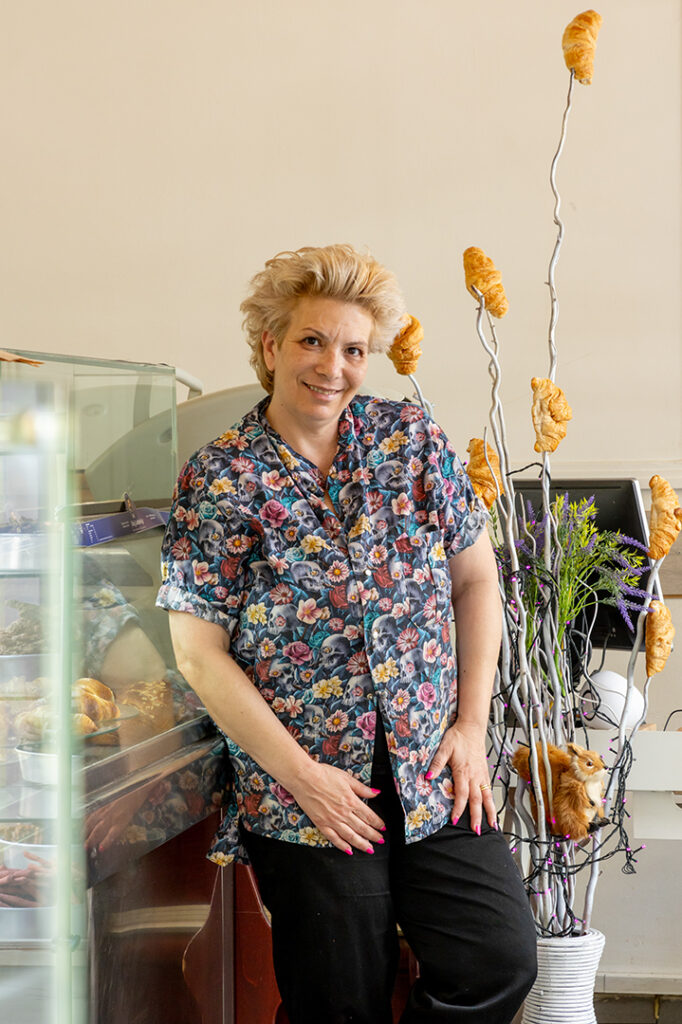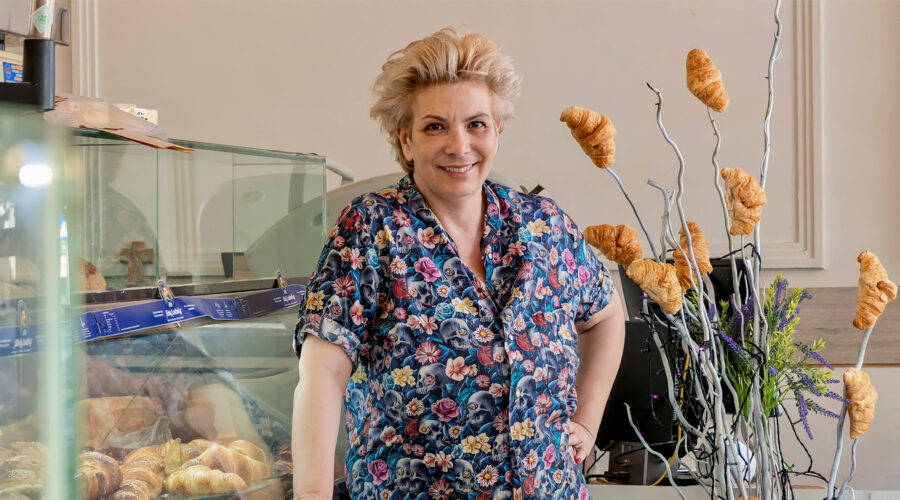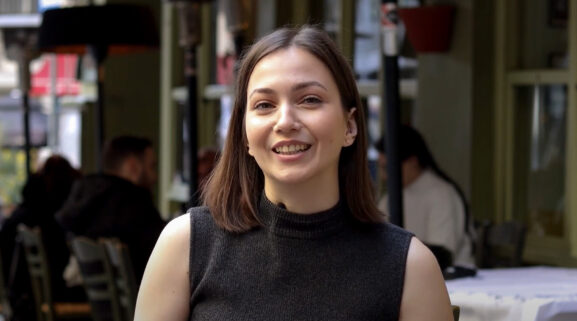Lena Kallidou, The Baker
If there is something in the category of pastry that seems really crazy (no exaggeration) to prepare, but in the process turns out to be incredibly tasty, when you try it, then it is definitely a creation of Lena Kallidou. From moussaka new year’s cake and dolmades flavored lagana to carbonara croissants. And she may not have (yet...) created anything containing retsina, but she herself has associated many of her fondest memories with it.
IN THE AGE OF "DEMESTICHA".
The bakery of Lena Kallidou (and her husband) is located on Markou Botsari Street. Although you can find all the classic pastries, it's not hard to see why it's called "The best croissant in town". Just make a random choice, take a bite, and lose yourself in the pleasure.
"I will never forget my first experience with retsina..." begins Lena Kallidou's story. “I remember being very young, around thirteen. It was somewhere between 1980-1985, in Karabournaki, in two famous shops of the time, 'Karekla' and 'Voutyras', where I used to go with my father. It was with ‘Demesticha’, which was something between wine and retsina, which after a while disappeared from the market. Of course, don't imagine that I was drinking – literally – retsina. In fact, my father wet my lips, so as not to spoil my pleasure and to satisfy my desire to try it. I remember the frozen bottle, the grandfather who passed by and sold the almonds, the vagrants with the lichens, the teddy bears, and the ribbons with the chocolates and chocofrettes. All of this makes up that wonderful picture. Another experience of the time was the dances, to which I remember going with my father, with ‘Demesticha‘(again) on the table. However, I also remember the saying they used to say at the time: 'Don't get drunk with ‘Demesticha’. It's the worst...'".

FRAGRANCE OF ANOTHER ERA.
The baker's memories follow each other at a rapid pace and are connected to different areas of Thessaloniki. "On Eptalofou Street there was a cafe-liquor shop that had retsina made from oak barrels and you took your own meze. I think they called it ‘Kritikos'", recalls Lena Kallidou. "You'd walk in, and the place would reek of retsina. I will never forget this smell. I think they were bringing it from an area in Athens – probably Markopoulo. The old residents of Toumba area used to take the herring wrapped in parchment paper, the cheese and the elixirs and he only put retsina. And they were telling their stories... As soon as I got my driver’s license, I remember my father sending me to buy retsina demijohns. And I remember living this thing many times. Not one and two, but more than fifty... A little further was Kravaritis, who had spits and nice retsina. I think it was in Papafeio, from the back side. I still remember the divine spit steaks..."
But what was that moment in time when she felt that the retsina began to leave the foreground? "When at some point Thessaloniki started to fill up with bars" notes Lena Kallidou emphatically. “People started ordering bottled wine or turned to foreign drinks – vodka, gin, mojitos, aperols and whatever else is out there that I don't know. You couldn't go to the bar and get retsina. And so, we kept it only for the moments with more 'traditional' food.With the cod, on March 25th , and on our nights outin various canteens. In the golden era of Aris in basketball, under Galis and Giannakis, we left the Palais des Sports with the Vespa and went with my father to 'Tsarouha' and 'Lefteris' -which has closed-, to eat tripe and drink retsina".
"I WOULD LIKE THE YOUTH TO KNOW IT..."
With such rich memories of retsina, what does she see as its place in today's times – and especially in the new generation, who didn't have the chance to know it in its glory? "The youth don't drink retsina" the baker estimates. "At least in Thessaloniki. But I have seen the youth in the neighboring villages drinking. But why do they drink? Because they drinks real retsina, but also because it is more economical. I won't hide from you that I happened to buy bottled from a supermarket, which I didn't like at all. My own generation, fiftysomethings, have associated it with demijohns. I would like a little more advertising. I would like the youth to learn it. It has been passed down through many generations. And before the war and after the war. My grandmother drank, my grandfather drank, then my parents, now me. It has been combined with joys and sorrows. At a wedding or christening table, but also at a table with a mourning character, such as at a funeral or a memorial service. It is connected to events, to our history, to ourselves".
Choose the interest you want and discover the route that suits:



